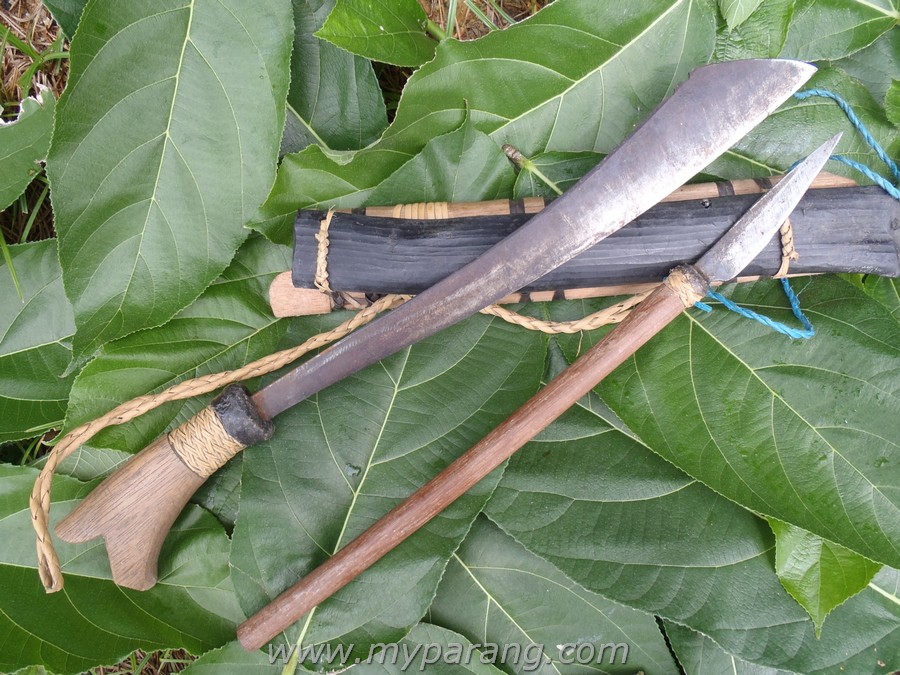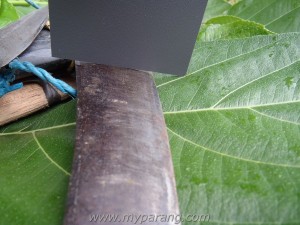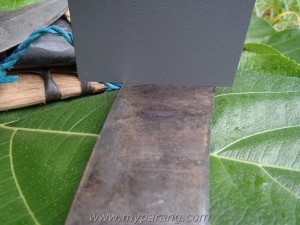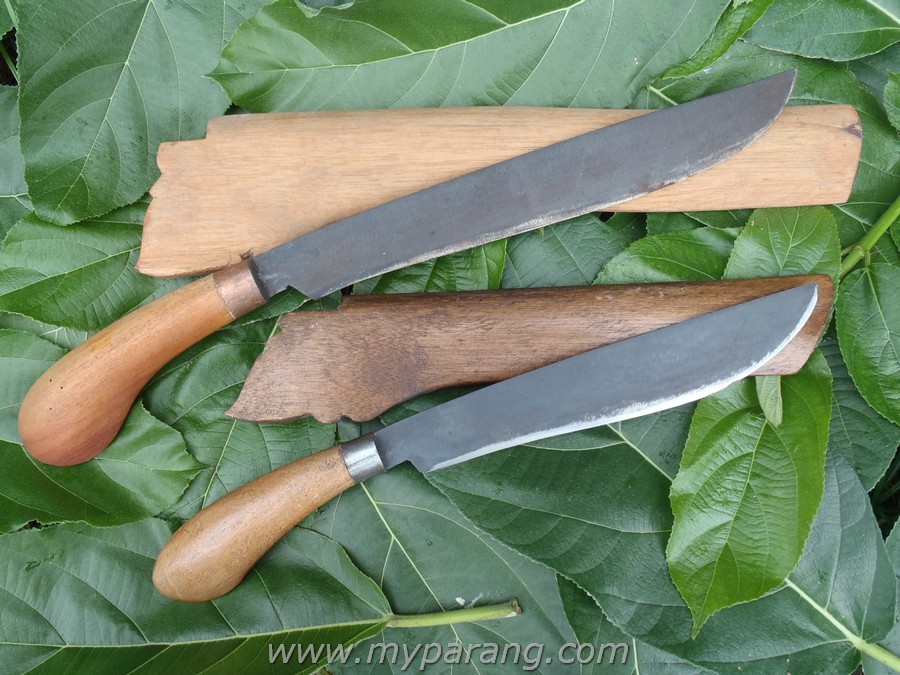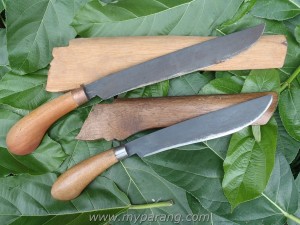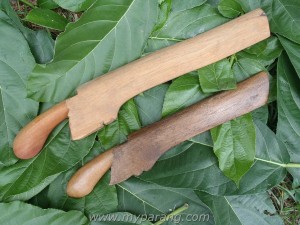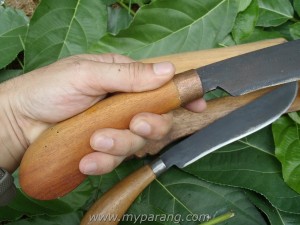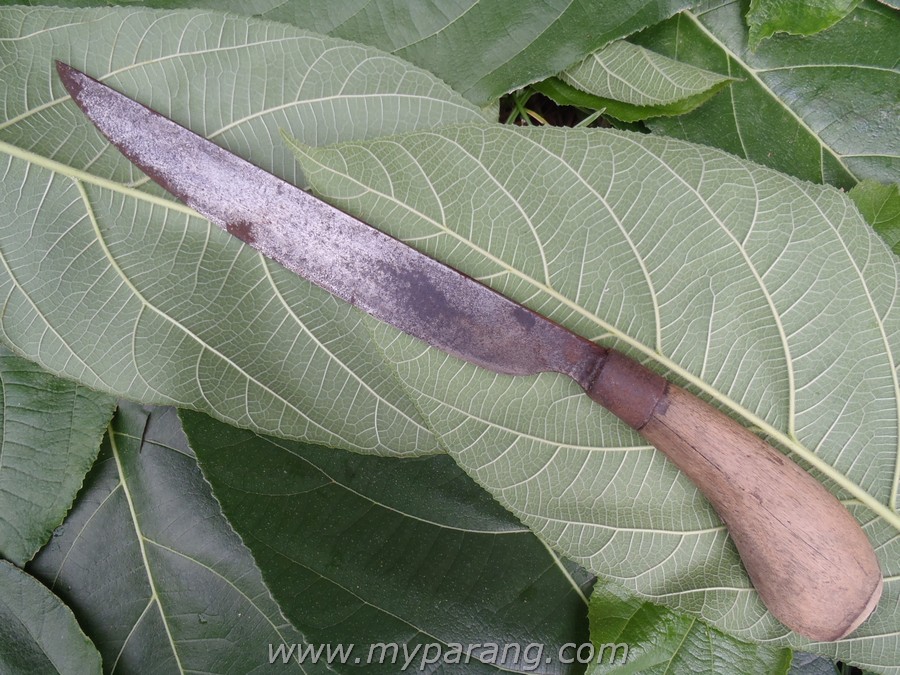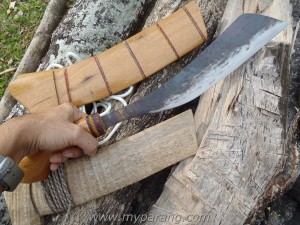The Small Ilang
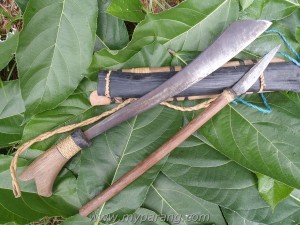 Here is another one one of my parangs, which is a small Ilang. I purchased this small Ilang from a handicraft store, and it was a used piece. I purchased this in Miri Sarawak, and I am sure it was sold to he craft shop by one of the natives there . When I purchased this small Ilang, it was already pretty well used, and I am very sure it was not made to look used, like how some tourist prices are made. This small Ilang comes with a smaller knife, called the Penat . While the small Ilang is used for heavier tasks like chopping and slicing , the smaller Penat knife is used for cutting rattan, carving , making fire sticks and peeling fruits.
Here is another one one of my parangs, which is a small Ilang. I purchased this small Ilang from a handicraft store, and it was a used piece. I purchased this in Miri Sarawak, and I am sure it was sold to he craft shop by one of the natives there . When I purchased this small Ilang, it was already pretty well used, and I am very sure it was not made to look used, like how some tourist prices are made. This small Ilang comes with a smaller knife, called the Penat . While the small Ilang is used for heavier tasks like chopping and slicing , the smaller Penat knife is used for cutting rattan, carving , making fire sticks and peeling fruits.
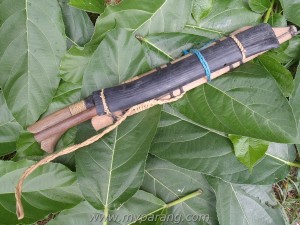 Here is the small Ilang, in it’s sheath. As you can see, both the small Ilang and the Penat are mounted and carried together, as this two-knife combination is able to cater for almost all cutting and chopping tasks. While the small Ilang is encased in a wooden scabbard, the sheath for the smaller Penat knife is made of flattened PVC piping. Both are held very securely by their sheaths.
Here is the small Ilang, in it’s sheath. As you can see, both the small Ilang and the Penat are mounted and carried together, as this two-knife combination is able to cater for almost all cutting and chopping tasks. While the small Ilang is encased in a wooden scabbard, the sheath for the smaller Penat knife is made of flattened PVC piping. Both are held very securely by their sheaths.
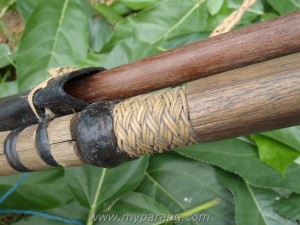 Here in the picture above, you can see the intricate rattan weaving on the small Ilang bolster. I really like the simple weave and use of natural materials. Just below the rattan weave, you can see a black blob if what I assume is Damar. This damar is used to glue the tang in the wooden handle. Damar is actually a resin from a type of tree ( Shorea) , sort of like unhardened ember. To make the Damar into a glue, it is heated and mixed with some other material, and one of them is ash. Besides as a glue for parangs, it is also used to caulk boats. Damar is also used to make lacquer and varnish.
Here in the picture above, you can see the intricate rattan weaving on the small Ilang bolster. I really like the simple weave and use of natural materials. Just below the rattan weave, you can see a black blob if what I assume is Damar. This damar is used to glue the tang in the wooden handle. Damar is actually a resin from a type of tree ( Shorea) , sort of like unhardened ember. To make the Damar into a glue, it is heated and mixed with some other material, and one of them is ash. Besides as a glue for parangs, it is also used to caulk boats. Damar is also used to make lacquer and varnish.
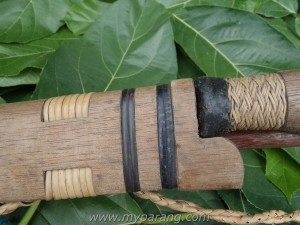 Here is another picture showing the simple rattan weaving on the small ilang sheath. The weaving not only keeps the two piece sheath together, but is also aesthetically appealing .
Here is another picture showing the simple rattan weaving on the small ilang sheath. The weaving not only keeps the two piece sheath together, but is also aesthetically appealing .
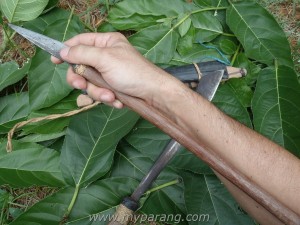 Here is how you hold the Penat knife. As you can see, the handle is long, and this long handle is held against the inner of your forearm, so you will have a much stronger and stable hold on the otherwise small knife. This is important when you are carving hard wood or preparing rattan ( meraut ) .
Here is how you hold the Penat knife. As you can see, the handle is long, and this long handle is held against the inner of your forearm, so you will have a much stronger and stable hold on the otherwise small knife. This is important when you are carving hard wood or preparing rattan ( meraut ) .
Another special feature that this small ilang has is the grind of the blade. I have seen many examples of chisel grinds, but this small ilang uses a convex- chisel grind , and I believe it only exists in traditional blades like this. I have not seen a convex- chisel grind on any modern knives, yet, if they do exist. As you can see from the pictures above, the top one shows the convex grind, while the lower picture shows the flat grind on the other side. I asked once why do the makers do this, and his answer was pretty straight forward and understandable – it’s easier and faster to sharpen on one side. These people use their parangs everyday, throughout the year, and sharpening them is a daily affair , so any efforts to make things faster and easier is definitely welcomed.
I have used this small Ilang pretty well, and it’s definitely one of my favorites. The only small issue is the handle size. It’s tiny, even fro Asian standards. It does fit my hand, and that’s because I have small hands.
